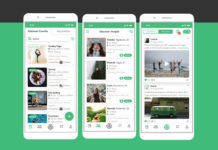
Key Points:
- The global leather market was valued at USD$414.0 billion in 2017 and set to reach USD$629.65 billion by 2025, according to reports by Grand View Research.
- In 2017, the global synthetic leather market accounted for 6.2% of the global leather market; it’s expected to grow to 7.2% by 2025.
- Today, the footwear industry is the largest consumer of leather alternatives and accounts for about one-third of the total leather alternative sales. Similarly, in the cruelty-free fashion market, vegan footwear accounts for 73 percent of total sales!
The use of leather is becoming increasingly controversial in the fashion industry, following in the footsteps of fur.
Although synthetic leather options have been available for almost a century, major innovations in this space are driving increased demand through the introduction of new plant-based synthetic leather alternatives that look and feel more like traditional leather.
In 2017, the global synthetic leather market was valued at USD$25.61 billion and is growing fast, set to reach USD$45.41 billion by 2025, according to reports by Grand View Research.
The forecasted growth in this market is being driven, primarily, by lower manufacturing costs and consumer prices, and growing consumer awareness of the conditions in the leather industry.
In 2016, the estimated number of cows killed every year to meet the global demand for leather products was 290 million; by 2025, that number is expected to climb to 430 million annually to keep up with growing global demand; which is forecasted to increase by 52% by 2025.
The tanning process of traditional leather production releases hazardous chemicals and gases, which has a detrimental impact on both the environment as well as the health of workers.
As a result, companies are increasingly searching for leather alternatives across various sectors, including footwear, furniture, automotive and more.
In the past, synthetic leather was made of polyvinyl chloride (PVC) or polyurethane (PU). However, the production of PVC and PU is not entirely environmentally-friendly, as the production process involves the release of harmful dioxins and/or the use of highly toxic chemicals.
Today, however, synthetic leather can be made almost entirely from plant-based materials such as pineapple, cork, mushrooms, apples, teak leaves and more.
Dutch company, Rotterdam Fruitleather, has a developed a leather-like material made entirely from leftover fruits and vegetables to make bags and other leather goods.
Even brands that traditionally depended on leather for their products are debuting products made from these new materials.
Luxury men’s fashion brand Hugo Boss launched “BOSS,” a vegan shoe line made from pineapple leather. Other brands in the footwear industry, such as Adidas, leading UK retailer Marks & Spencer and the German brand Birkenstock, have also introduced a range of synthetic leather products.
Consumer preferences are shifting at a record pace.
According to a new report from Edited, a retail technology and data company, there are now 52 percent more products described as “vegan” selling online compared with the same time last year.
Overall, the market for synthetic leather, plant-based or otherwise, has all the elements in place to be successful; the products address a gap in the current market place, new entrants are able to compete on price and the quality of their products are equal to or exceed that of the incumbents.
Collectively, these conditions amount to not only significant growth potential in the short run, but also sustainable growth potential in the long run.
by Andrew Ourique
Source: www.plantbasedtoronto.com











